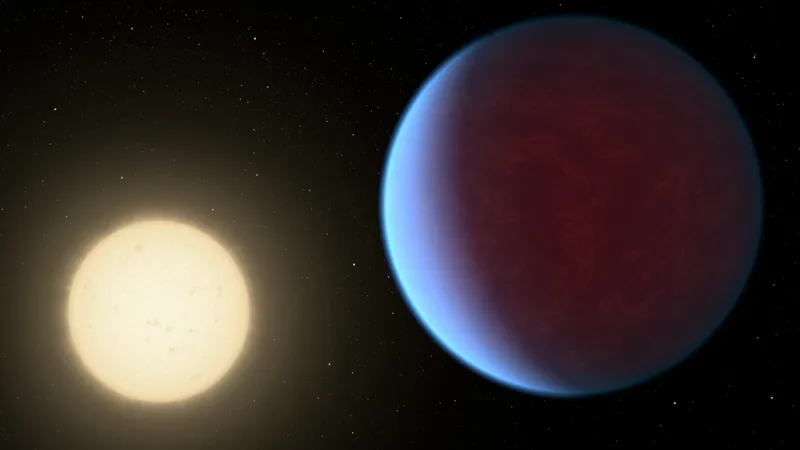55 Cancri A, also officially named Copernicus, is known to have a family of five exoplanets in orbit around it, possibly even more.
The star is located just 41 lightyears from the Sun, a stone's throw in cosmic terms.
And 55 Cancri A is a K0 IV–V type star; a cool, G-type main sequence star or sub-giant star, a little bit like our Sun.

It’s not alone, having a dim mag. 13.2 red dwarf to keep it company.
From Earth, the pair appear separated by 85 arcseconds and seem to be gravitationally bound to one another.
The primary, 55 Cancri A, is marginally smaller and less massive than our Sun, and is around 60% as luminous.
On 6 July 2003, a METI (Messaging to Extra-Terrestrial Intelligence) message named ‘Cosmic Call 2’ was sent to the 55 Cancri system. This message will arrive in May 2044.

How to see 55 Cancri in the night sky
Rho1, as 55 Cancri A is also known, is an interesting star that can ignite the imagination, but it needn't remain in the realms of fantasy; you can observe this star in the night sky.
You can find it in the constellation Cancer the Crab, which is represented by a faint, inverted Y shape.
The base of the Y, which marks the north point of the pattern, is mag. 4.0 Iota (ι) Cancri.

Located 1.3° further to the east-southeast is mag. +5.9 Rho1 (ρ1) Cancri, with mag. +5.2 Rho2 (ρ2) Cancri 0.8° further to the east-southeast.
There’s an easy way to confirm you have the right star: mag. +6.3 53 Cancri lies 4.5 arcminutes south and slightly west of 55 Cancri, forming a distinctive and easily recognised pair.
Four of the planets orbit 55 Cancri closer than Earth orbits the Sun. 55 Cancri d, the largest of the five, with a mass of 3.12 Jupiters, orbits at a distance of 6 AU.
Have you managed to observe 55 Cancri? What message would you send out to a Sun-like star? Let us know by emailing contactus@skyatnightmagazine.com
